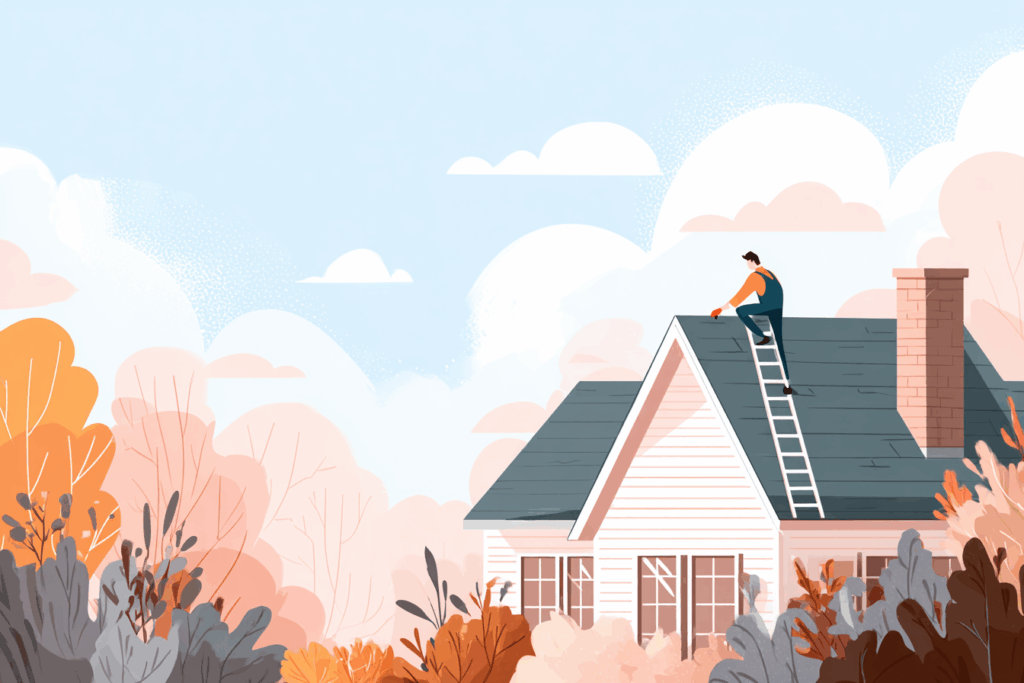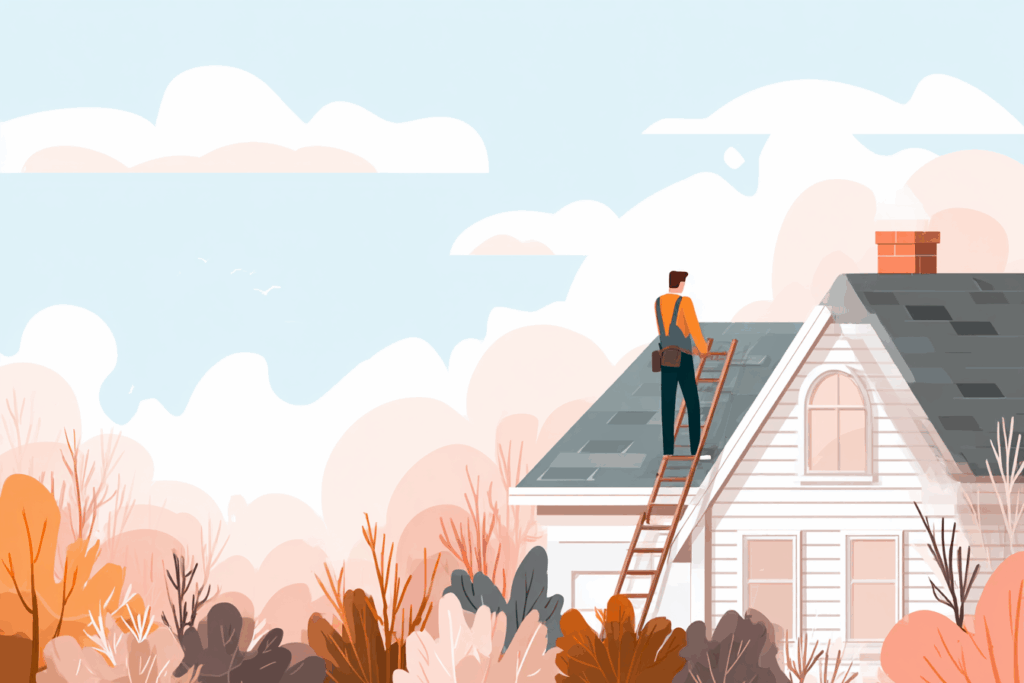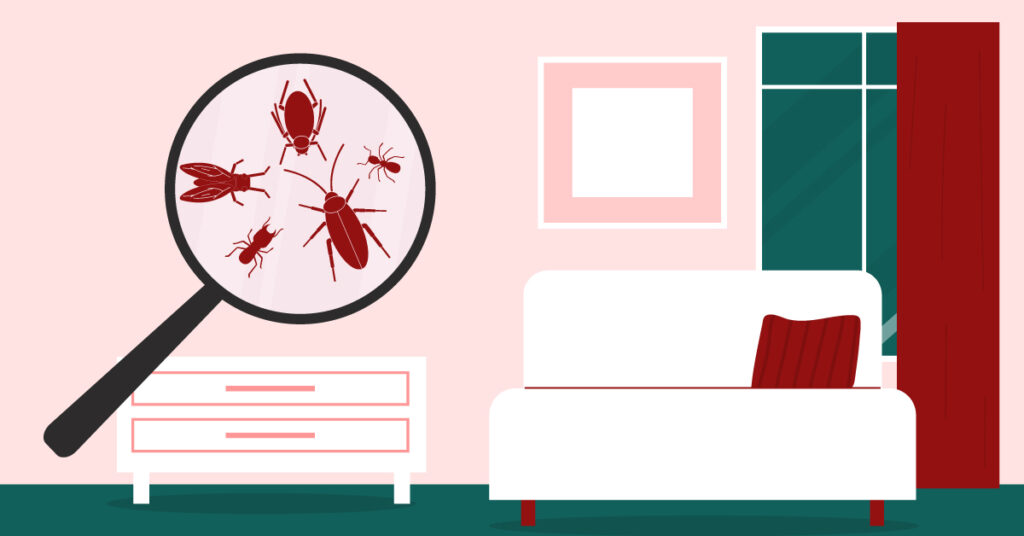Your roof is your home’s first line of defense against the weather elements, year-round, but even durable materials can develop issues over time. From small leaks to moss growth, identifying and addressing these issues promptly can prevent costly repairs and extend your roof’s lifespan.
Keep reading as we share more about the top 10 roof problems and how to deal with them before they become a major financial and safety headache.
1. Roof Leaks
Roof leaks are the most frequent and potentially damaging roofing issue. They often form around flashing, skylights, chimneys, or damaged shingles, allowing water to seep into the attic and walls.
Signs to Look For:
- Water stains on ceilings or walls
- Damp insulation
- Mold or mildew smell
- Curling shingles near roof penetrations
Solution
Closely inspect your attic to find the source of the leak. Seal small gaps with roofing cement, but for recurring or major leaks, you will definitely want to hire a professional roofer to repair flashing or replace damaged shingles.
To prevent future leaks, regularly clean your gutters and don’t forget seasonal inspections.
2. Missing or Damaged Shingles
Shingles protect the roof’s underlayment. When they’re missing or cracked, moisture can penetrate and rot the decking beneath.
Why It Happens:
- Wind or hail damage
- Natural aging
- Poor installation
- Ice dam lifting
Solution
Replace missing or broken shingles immediately. Use roofing nails and sealant for minor repairs. If a large section of your roof is damaged or your roof is older than 20 years, replacement may be more cost-effective.
Prevention Tip: Inspect your roof after major storms or high winds to catch issues early.
3. Flashing Failures
Flashing seals roof joints and prevents leaks. When it rusts, cracks, or separates, water can infiltrate through chimneys and vents.
Signs:
- Rusted or bent flashing
- Cracked caulk
- Water stains near vents or chimneys
Solution
Reseal small gaps with roofing cement. Replace damaged flashing and reapply sealant around edges. If movement or settling has loosened flashing, a roofer can reset and reseal it properly.
4. Clogged Gutters and Downspouts
Debris in gutters prevents proper drainage, causing water to overflow and damage fascia boards and siding.
Solution
Clean gutters at least twice a year, after spring pollen and in late fall. Make sure downspouts discharge at least 5 feet away from your foundation. Gutter guards can reduce buildup from leaves and pine needles.
5. Ponding Water on Flat Roofs
Flat roofs often accumulate standing water, which instantly accelerates membrane wear and leakage.
Causes:
- Blocked drains
- Poor slope design
- Structural sagging
Solution
Clear debris and unclog scuppers and drains. If ponding persists, a roofer can install tapered insulation or adjust drainage. Regular post-storm inspections are essential for flat-roofed homes and commercial buildings.
6. Moss and Algae Growth
Moss and algae thrive in damp, humid, and shaded areas. Moss lifts shingles, letting water seep underneath, while algae create unsightly dark streaks.
Solution
Spray a 50/50 mix of water and bleach on affected areas, then rinse thoroughly. Avoid pressure washing. For long-term prevention, install zinc or copper strips along the ridge; rainwater running over them helps prevent regrowth.
Prevention Tip:
Trim overhanging branches to improve airflow and sunlight exposure.
7. Ice Dams in Winter
Ice dams form when warm attic air melts snow on the roof, which refreezes near the eaves. This can back up under shingles, causing leaks.
Solution
Improve attic insulation and ventilation to maintain even roof temperatures. After heavy snowfall, use a roof rake to remove snow before it freezes. Heat cables can also help in persistent problem areas.
8. Poor Ventilation

Without proper ventilation, hot air and moisture become trapped in the attic. This causes shingle damage, mold growth, and higher energy costs.
Signs:
- High energy bills
- Condensation on rafters
- Musty attic odor
Solution
Ensure soffit and ridge vents are clear. Add attic fans or gable vents to promote air circulation. A roofing professional can recommend the best setup for your climate.
9. Sagging Roof Deck
A sagging roof deck indicates structural weakness caused by water damage, excessive weight, or poor installation.
Solution
Inspect the attic for moisture damage or rotted beams. Repairs typically require professional reinforcement or replacement of the roof deck. Prevent sagging by keeping gutters clear and promptly removing heavy debris or snow buildup.
10. Aging and Weathering
Even with perfect maintenance, roofing materials degrade from UV exposure, storms, and temperature fluctuations.
Solution
Most asphalt roofs last 20–30 years. Schedule annual inspections to monitor aging. If you see widespread granule loss, curling shingles, or repeated leaks, it’s time to plan for replacement.
Preventive Maintenance Tips
Here are a few top maintenance tips for keeping your roof in tiptop shape.
- Inspect your roof twice annually: Spring and fall are ideal.
- Clean debris regularly: Keep gutters, valleys, and vents free of debris.
- Trim nearby trees: Prevent branches from scraping shingles.
- Check sealants and flashing: Reseal joints before they fail.
- Keep records: Track maintenance and minor repairs over time.
Professional roof inspections are inexpensive compared to complete replacements. A roofer can identify early warning signs you might miss and suggest proactive repairs.
Final Thoughts
Your roof silently protects your home every single day. By spotting leaks, moss, missing shingles, or ventilation issues early, you can avoid major repairs and extend your roof’s lifespan. Regular maintenance, timely repairs, and seasonal inspections keep your roof strong and your home dry for decades to come.
You might also be interested in: A Guide to Navigating Roofing Regulations and Standards




